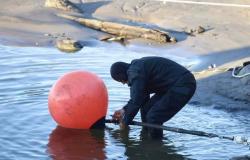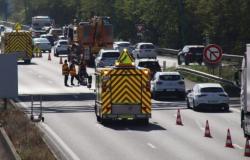To what extent will artificial intelligence disrupt the daily lives of winegrowers?
Christophe Riou: The sensors digital which rely on theartificial intelligence have existed for a long time, like the monitoring and management of fermentations. This is now happening on vine. AI also provides support for logistics and packaging. Tomorrow, advice will be provided by AI, and support functions will be provided by global artificial intelligence consulting solutions (legal, financial, consulting). Perhaps AI will also support marketing. It will not be a real breakthrough like phyto products or mechanization, but this transition will allow productivity gains.
Anthony Clenet: Artificial intelligence covers two major different sectors. The one that is getting a lot of attention right now is that ofGenerative AI (images, texts, translations, etc.). I’m not sure that this branch will revolutionize agriculture.
The other part of AI is that which integrates into other tools such as decision support tools or the robots. One AI will be able to detect obstacles, another predict disease attacks or even yields. AI is being infused into many areas that will help in decision-making. Rather, it will be a new wave in the digital revolution that has already brought a lot to agriculture.
Faced with recruitment problems, will robots be the workforce of tomorrow?
AC: There are reservations to be made to the development of robots. First of all, the regulations. Most robots still need supervision, cannot cross a road, etc. We will have to remove all these obstacles so that robots can replace the workforce. But ten years quickly arrived at the regulatory scale. The second obstacle to the deployment of robots is their cost. The latter depends on the number of devices sold and the economies of scale that manufacturers will be able to make. If robots become multifunctional, they will develop.
CR: Viticulture is already a highly mechanized production. It remains there size. AI coupled with robotics will tomorrow make it possible to automate this step. We can also imagine that the harvest will be done cluster by clusterwith an automatic maturity level assessment. But robots are expensive and are not suitable for all vineyards; I believe more in automation tasks. We see that auto-guidance and driving assistance are developing. Likewise, we can think that fixed spraying will be deployed, as well as precision irrigation.
What place will agroecology have?
CR: There will be several production strategies that will coexist. Viticulture with high added value, with local roots and which will take into account aspects of sustainabilitywith living soilsof agroforestryetc. And at the same time, we will have more technological viticulture, which will respond to new markets such as that of bubblesor low alcohol wines. We will also see the arrival of dual-purpose associated crops, such as grass cover, inter-row cultivation, and hedges.
AC: It is difficult to answer because behind the word agroecology, there are many different practices. Some will be applied by everyone tomorrow, like the reasoning of quantities of phyto products based on attacks and forecasts weather report. Others, however, such as plant cover, raise many questions and must be considered on a case-by-case basis. Furthermore, expensive techniques will be difficult to support in the current context. Some farms go very far, with hedges, chickens, etc. They find an economic balance which often goes hand in hand with wine tourism and hospitality on the farm. But this cannot be the only model. At the ICV, we support a diversity of models.
How will we treat the vines?
AC: It is difficult to imagine a revolution on treatments. Solutions are promising, like the resistant varieties. But we do not yet have all the necessary varieties and we do not yet measure the impact on consumers. We can hope for progress in dose modulation, with more and more sensors on board tractors. This could be a real support. But basically, in ten years, the protection of the vine could be quite close to the current one. Maybe with robots…
CR: We are facing a continuous reduction in active substances, the copper is on probation. It will therefore be necessary to combine biocontrol solutions, stimulation of defensesresistant vines. We can imagine getting closer to the cereal booms with continuous spraying of SDN and/or biocontrol. But as there will be no effective solution within fourteen days, it will also be necessary to strengthen prophylaxis, in particular by removing the primary inoculum and strengthening field observations and risk prediction through modeling.
How will we reconcile climate change and viticulture?
CR: Innovation will not allow viticulture to adapt to climate change in all situations. There will be an evolution of the vineyard; it will be necessary to rethink the management system with real ruptures like the cupthe pergolaetc. Plant material will be an important lever. Likewise, there are tracks with the microbiotathe role of soletc. We will have to reduce water consumption and increase the shade of the vines. More resilient models exist but maintaining the vines in certain places will be difficult, unless they produce with yields below 20 hl/ha.
AC: Climate change is a real challenge for viticulture. In certain places, it will be difficult to reconcile it with the vine, as in the Pyrenees-Orientales. We could maintain the vines there, but with lower densities, manual work, management methods and different economic models. The other solution is to migrate at altitude. There are historic vineyards that will disappear and others that will appear. Overall, we will have to accept reductions in yield and think about a new economic balance. There will not be a miracle solution but a set of solutions.
NBTs (1) will they be accepted and deployed?
CR: Like hybridization, NGT (1) will be a new step in the adaptation of the vegetal. Research is going very quickly in Italy or China. The debate will be driven by major crops; it will be the consumer who will decide whether or not these techniques are acceptable. For the moment, we are at the research stage. Few genetic markers are known, such as resistance to downy mildew or powdery mildew, for example.
What dieback problems can we hope to see resolved in ten years?
CR: There will be an evolution in the diebacks. We are moving towards the identification of a resistance gene to short knottedwe know that the black Magdeleine des Charentes is tolerant to golden flavescence. With hybridization techniques and NGT, we will accelerate resistance and tolerance to certain diseases. Tomorrow, the main threat will come from new pests or vectors, such as Xylella fastidiosa fastidiosa or Popillia japonicawhich can be devastating. The key will lie in the triptych: prevention, detection, anticipation.
AC: We are facing problems which have poorly identified causes and ten years is a short time. The work and efforts made by the sector are bearing fruit and we are seeing techniques such as soft waist which are diffused. This will help curb the phenomenon a little. But a priori, we will not have found a solution within ten years.
What will be the pest threats tomorrow?
AC: We see that new pests, such as African leafhopperor Cryptoblabès gnidiella currently pose problems. But we have effective surveillance systems and we are reactive, even if a health crisis can still hang in our face, particularly with the appearance of viruses (Pierce’s disease).
How will the carbon impact be taken into account by the profession?
CR: The main position is that of packaging a you transport. This is an area that will move quite quickly, with an evolution in the weight of bottles, methods of distributing wines and the development of small bulk and re-use. At the same time, winegrowers will also be able to act on the soil, equipment and trees. But I think that we will rather move towards carbon neutral territories, with a compensation system. This is the vision of large groups, such as Moët Hennessy, which are undertaking forest planting programs. These initiatives are also supported by defense and management organizations (ODG) or cooperatives at the regional level.
AC: The carbon impact is present in the reflections of winegrowers. There glass bottle and the recycling are the first subject. Then behind logistics transport, particularly the last mile. A fundamental reflection is taking place but over a long period of time. And all the more so since there are no real consumer expectations for low-carbon wines.
Will wine be a very natural product or on the contrary technological?
AC: We must distinguish the image of the wine that we want to give from the process itself. As long as the definition of wine does not evolve too quickly, namely a product resulting from the fermentation of grapes, we will remain with a natural product. But if the limits shift via zero alcohol or drinks that are no longer wine, we can switch to a technological product. Otherwise, in my opinion, it is a mistake to oppose natural products and technologies.
CR: There will be several types of wines, aimed at different types of consumers. Wines from winegrowers, with a strong identity, a territorial anchoring and consideration of sustainability will coexist with wines corresponding to new types of products, based on wine or grapes.
(1) New genomic/breeding techniques – New selection techniques allowing the modification of the genome of a species






